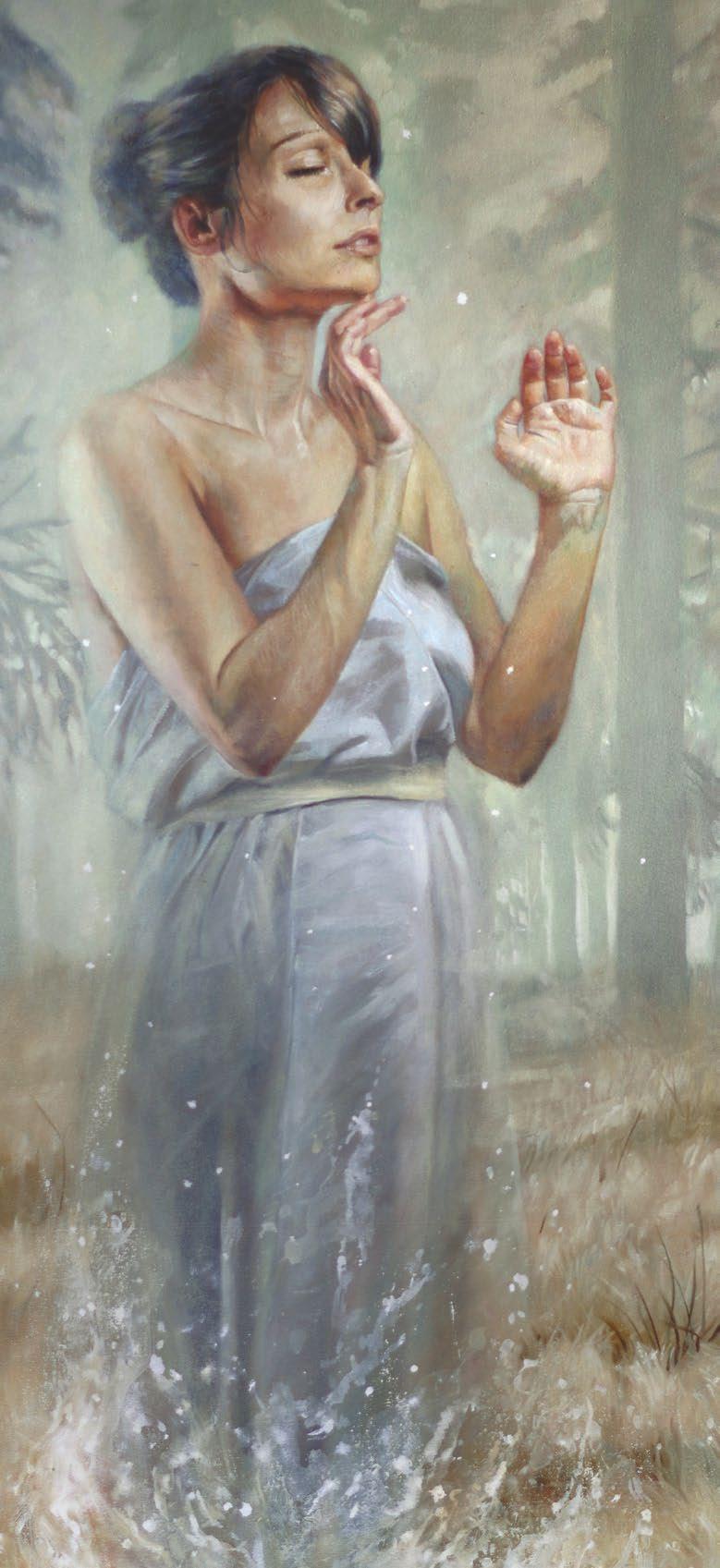
3 minute read
JOLANDA RICHTER
BY JACLYNTRUSS
Paintings were a world in which I found shelter
@jolandarichter / jolanda.at

Upon seeing the striking work of Jolanda Richter, you will immediately succumb to the familiarity and unsettling undertow of her visual narratives. A lifelong student of the arts, award-winning Richter interweaves psychology and impeccable artistic skill into her oil paintings.
“When I was a child, I preferred studying art encyclopaedias for hours instead of playing with other children,” Richter told InSpades. “Paintings were a world in which I found shelter.”
The majority of Richter’s collection centers on women and children, often projecting a sense of displacement, frustration and non-sexualized nudity. In her oil painting “Quintessence”, the ironic title brings a tragically dark humour to the female experience.
Clad in lingerie and fused with a stone background, the female subject is a carved portrait attempting to emerge from solid confinement. Fearsomely, her own fingers sprawl across her face, tense hands both pulling and compressing her visage into the stone with a convulsed look of capture in her eyes.
“Psychology is the key for decoding my artwork,” said Richter. “The ideas for my paintings develop from a complex inner process.”
“Quintessence” is merely one example from Richter’s collection, where a female subject is blocked by society’s expectations of what a woman can and should be. Many paintings include the female form placed against the backdrop of a fissured stonewall, seeming to reflect women’s attempt to break away from imposed societal moulds to express her individual identity.

“In most regions of the world, women have no rights, or even a chance for self-determination,” Richter explained. “It is important that there is continuous awareness of that fact.”
Another aspect of Richter’s work focuses on the psychological exploration of one’s childhood. Alice Miller, a psychologist whose work explored the link between childhood trauma and mental illness, served as a significant inspiration for Richter. Miller emphasized the need for adults to acknowledge the truths of their childhood in order to resolve their internal struggles, as opposed to displacing events and memories. For Richter, facing your “inner demons” is “the prerequisite for a positive and contented life.”
As such, Richter’s work serves as a portal into the viewer’s innerworkings, enabling access to their childhood experience and, as a result, an understanding of themselves. In “Scream”, a small child wails in seeming frustration at the edge of the canvas against a cracked wall, an ambiguous adult arm emerging from the opposite corner as if to grab or guide the child. Looking at “Revelation”, a little girl stands against a stone mural of women, a subtle furrow on her brow as if to convey her growing sense of understanding, mired with confusion, over the role she will eventually grow into as a woman.
“As an individual with acute sensitive awareness, I absorb my surroundings, feeling wounds and injuries perhaps more intensely than others,” said Richter. Projecting the emotional experience of herself and others allows Richter’s paintings to carry a power that the viewer can wield when analyzing her work—the power to articulate and understand their inner-selves.
Deriving influences from the “old masters” like Caravaggio, Alfons Mucha and Camille Claudel to name a few, Richter’s work has been featured in countless international exhibitions and publications. She now lives as a freelance artist near Vienna, Austria, where her work continues to leave the viewer pondering the profound messages her paintings persistently resonate.

YEAR ONE INSPADES ART BOOK ONE YEAR of inspiration, collecting the best artists, creative thinkers, visionary minds that will blow your mind! Hardcover, luxury print on proline pearl paper, a must-have exclusive piece in your collection only at https://www.blurb.ca/user/INSPADES










